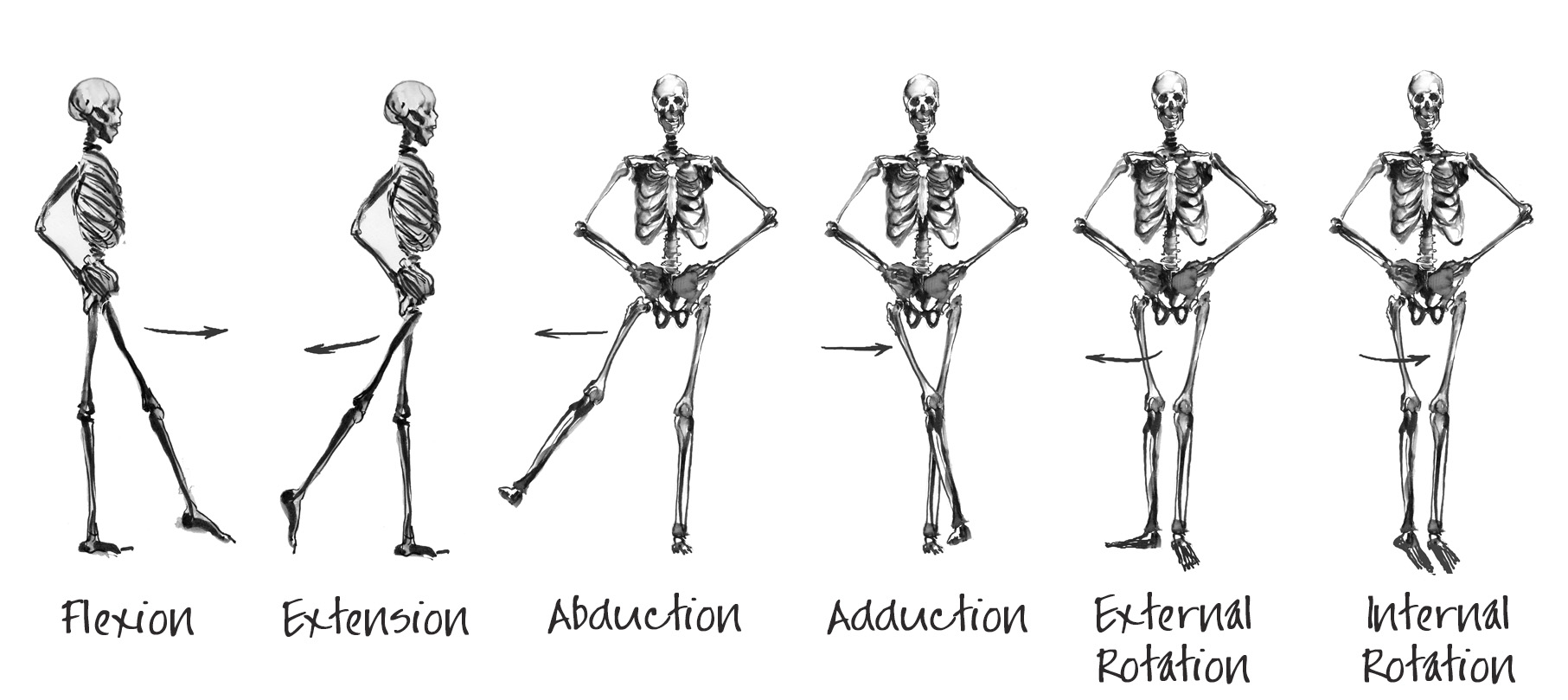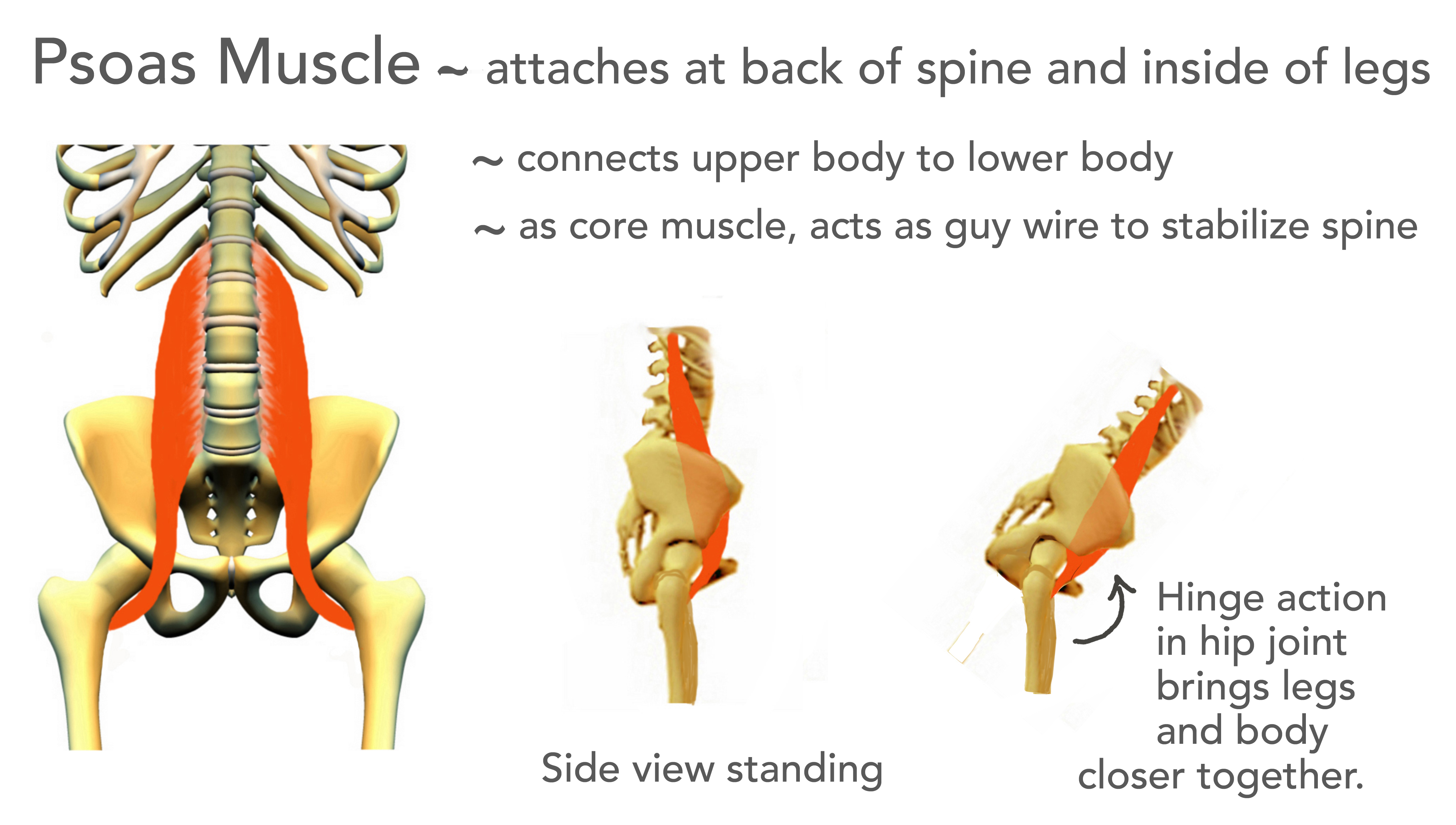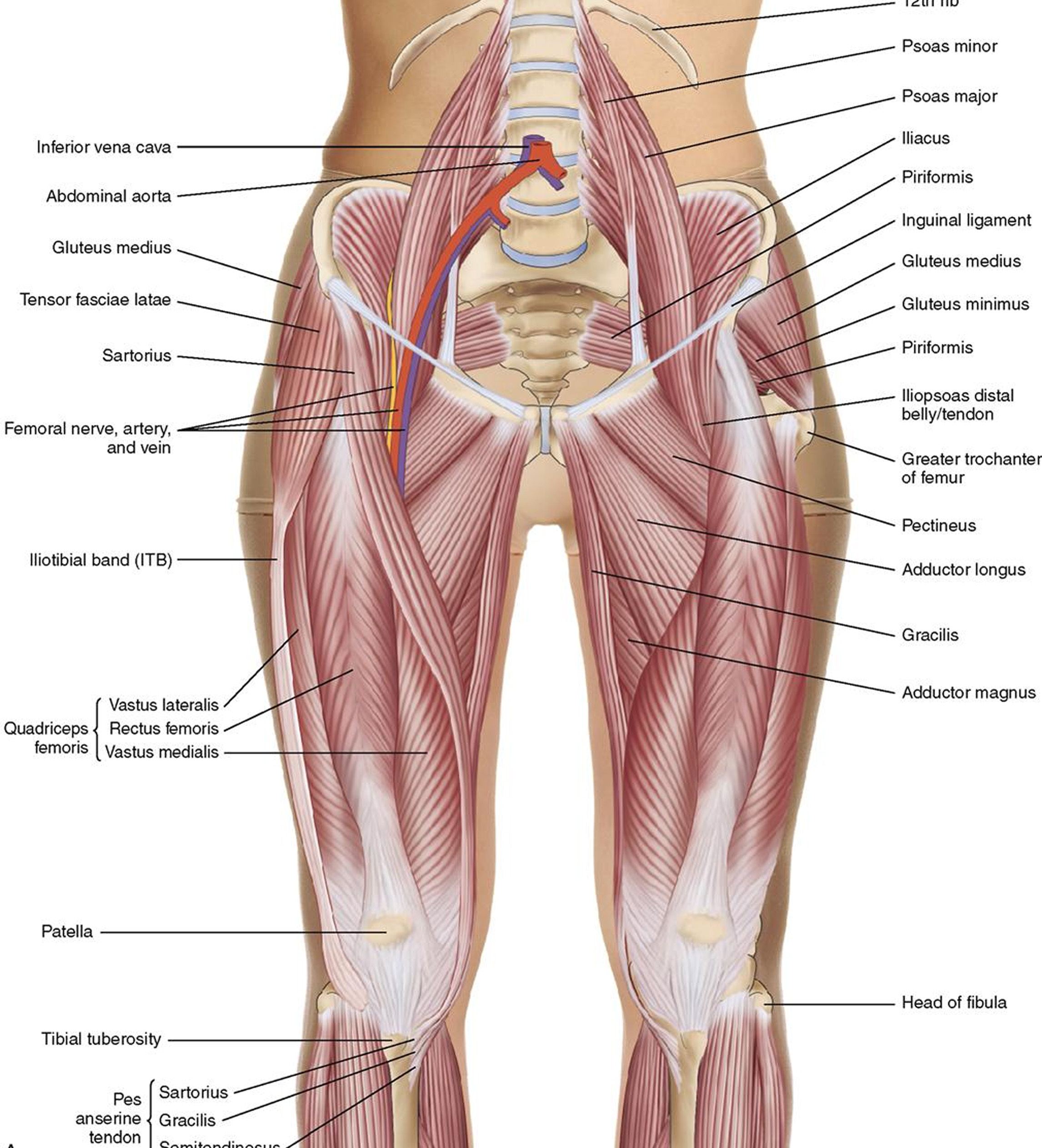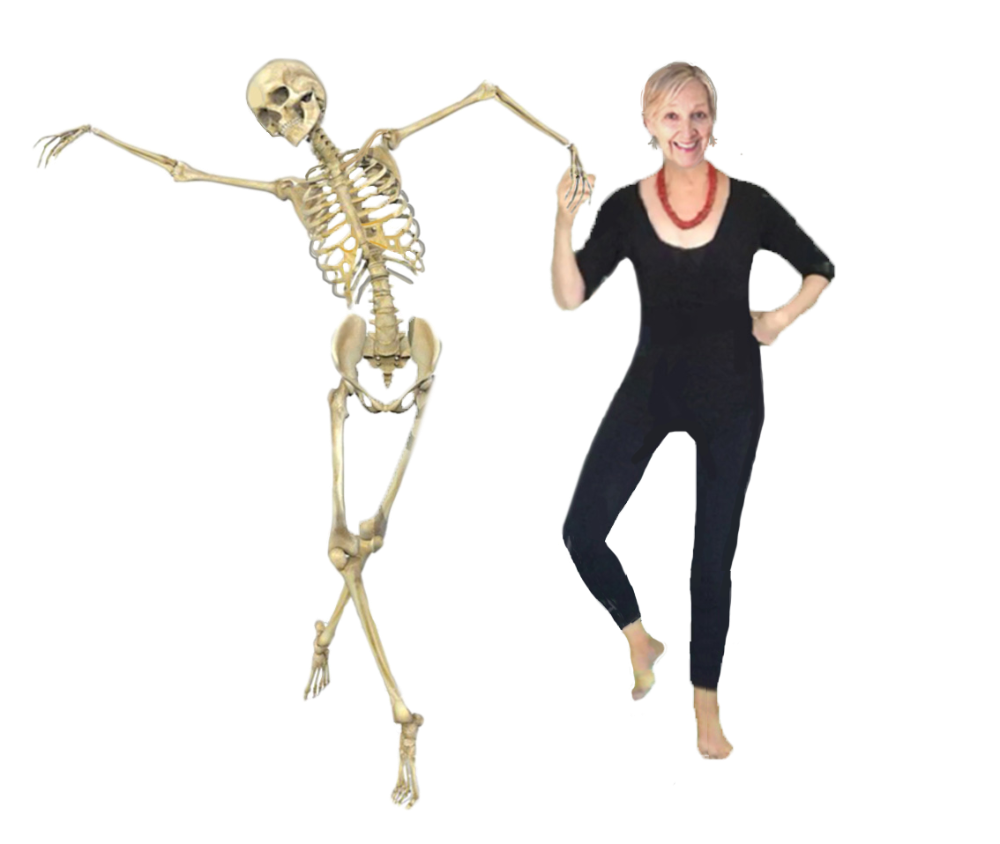These Hips are Made for Bending
Before we dive in and discuss how to keep your hips moving with ease, let’s take one quick minute to refresh our understanding of where the hip joints are located in the body.
Whether or not our hip joints function naturally or unnaturally matters much more than we know.
This is because of the important role our hips play in the everyday life of our body:
— serving as a primary weight-bearing joint;
— connecting the legs to the torso by way of the pelvis;
— transmitting support from the feet and legs upward; and
— defining how we move.

This wonderful drinking bird toy perfectly captures the flow and ease with which our hips are meant to bend.
Most of us wish our own hips moved with such ease as the drinking bird. I sure did when I was approaching my 50th birthday and was plagued with hip pain that kept me awake at night. This was a surprising development, since at the time, twenty-five years ago, I had been practicing and teaching yoga for over a decade.
Just to be clear, I’m not knocking yoga. Yoga has much to offer, especially when it comes to calming the nervous system and quieting the mind, not to mention all the healthy goodies that come from this.
On top of all this, when yoga postures or asana are practiced in alignment with our body’s natural design, they can reinforce a lifetime of physical ease.
So it’s not yoga, per se, that causes hip problems, although in my case, it was. Or more accurately, it was the misaligned way I was doing yoga back then. I’ll step out on a limb here and venture to say that far too many yoga teachers and students today still practice yoga in ways that can lead to long-term problems.
Is this really true? Unfortunately, yes. It can come as a surprise to discover that a striking number of yoga students and some quite well-known teachers, have gone through hip replacement surgeries. This is a real thing. I won’t go into more detail here, but you can google it if you want to know more. I’ve linked a couple articles at the end of this post.
Hip problems and surgeries are occurring in epidemic numbers in American society. Chronic inactivity such as too much sitting, as well as “overuse” in activities such as running or cycling, are commonly blamed as the main causes of hip pain and injury; but it’s fairer to say that misuse of the hip joint is the real culprit.
Our hips are a ball and socket joint that allows us to move our legs in complex ways. It’s helpful to think of a free-moving and “open” hip as one that moves through its natural range of motion with ease.

Yet, for all the ways a hip can move, it’s the simple hinge-like action of moving the thigh closer to or farther from the torso (related to flexion) that is most prevalent in ordinary daily activities.
“Hinging” at the hips applies to activities such as sitting on a chair or car, reaching across a table, bending to feed your cat, or running to get out of the rain. Each one of these involves the thigh and the torso moving closer and/or further from each other.
It’s when we believe enduring flexibility only comes from repetitive stretching that we can run into problems down the road. Natural, easy flexibility is the inevitable byproduct of inhabiting our body in an aligned way that conforms to the laws of physics.
As usual, babies and toddlers, who have never heard of yoga or stretching, are the real gurus for how to inhabit the body with flexible ease.

Healthy infants spend their earliest months fulfilling basic neurodevelopmental movements laid out by Nature for building a deep internal core. By the time they’re able to bring themselves up to sitting, they also have as much flexibility in their hips as anyone will ever need.
Lots happens—or doesn’t happen—in these early months of infant development that can interfere with this natural process. Unhelpful habits can also develop later in childhood, as well, and begin to derail natural alignment and flexibility.
Skeletal muscles are attached to our bones. They act as pulleys to move these bones and/or provide stability. The primary hip flexor muscles—the psoas, iliacus, and rectus femoris—act together to perform both of these functions. (A number of other muscles also act as hip flexors of a lesser sort.
Of particular interest is the psoas, because it’s the only muscle in the body that connects the spine and upper body with the legs and lower body, and as such, plays a key role in dynamic human uprightness.

A psoas that’s too tight pulls the spine downward, compressing vertebrae, tucking the pelvis under, and interfering with fluid, easeful movement by locking up the hips.
Before I close this, I’d like to share a simple exercise you can do right now that gives you the experience of what it feels like to release and open your hips.
You can read the instructions or listen to the narrated version that guides you through this exercise, step-by-step.
Before you begin, notice in this image that there are multiple muscles in the area of the hips. You don’t need to know the names of any of them or which ones you might be feeling when they tighten or release them. I just want you to be aware of the fact that there are a whole lot of muscles all around the hips.

- Begin by standing up tall, with your spine rising all the way up your back.
- Place the tips of your fingers in the crease of each hip, where your legs meet your torso.
- Take a moment to slowly push your hips forward—as far forward as is comfortable. If you feel pain in your back, stop. Or back off until you don’t feel any more pain.
- Notice the tightening of muscles as they contract under your fingers when you push forward.
- Now, as you begin to move your thighs and pelvis back, notice how the crease becomes softer and has more depth to it, as if letting your fingers in more.
- And then repeat this again one or two more times, paying attention to the tightening and then release you can feel underneath your fingers.
- Now you’re going to move your pelvis even further back, as if strings attached to your sit bones are being drawn behind you. And notice how this causes “hinging” at the hip joints, so that your upper body bends forward, moving closer to your legs. Your spine remains straight and elongated as you slowly bend. Let your knees be soft and not locked as you do this.
- And again notice the crease at the hip, and how it again becomes deeper and softer.
- Slowly let your upper body rise up again, paying close attention to what’s happening under your fingers as you press your hips forward again.
- Do you also sense tightening of the quadricep muscles at the front of your thighs? What about your glutes or gluteus muscles in your buttocks?
- Now let your sit bones be slowly drawn out behind you again, and notice the softening that comes into your thighs and buttocks, and the deepening crease under your fingers.
So that’s it. A short and simple experience for how to release unnecessary tension in the hips.
There are just a couple of things to keep in mind here:
- If you think your thighs (quads) are supposed to be hard and well-developed, you may want to rethink this. Overdevelopment of the quadriceps creates restriction in the hips and prevents them from being open and free. And don’t get me wrong. We want our legs to be strong, but in a balanced sort of way. We want our legs to be plenty strong enough to run and leap and jump and dance, to help us lift and carry things and move our bodies through the world. This kind of strength is never overdeveloped, but elastic and buoyant. And it’s stuck and cut off by hips that are tight and locked up, unable to transmit that energy and support to the body above them.
- And if you worry that your upper body is tipping forward don’t worry about this at all. Right now, we’re only focusing on the hip joint and exploring what needs to happen for it to be free of unnecessary tension or restriction.
And, finally, you can give your little drinking bird tail feathers a happy little shake and congratulate yourself for all that you learned today!
Hip-Hip-Hooray!
That’s it!
Kathleen
P.S. Here are several articles discussing yoga and hip replacement surgeries:
https://www.nytimes.com/2013/11/03/sunday-review/womens-flexibility-is-a-liability-in-yoga.html
Ready to be pain-free?
Get tips for pain-free living with natural posture and more.
We hate SPAM. We will never sell your information, for any reason.
